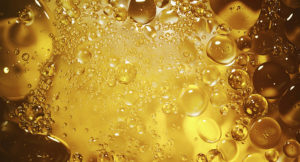 Oil sampling and analysis is a method of determining and tracking the health of your hydraulic fluid. A oil sample is taken and sent to a lab to discover ISO particle count, water saturation, additive content and viscosity. These qualities in normal range are imperative to a reliable hydraulic system, and sample testing is the best way to test for it.
Oil sampling and analysis is a method of determining and tracking the health of your hydraulic fluid. A oil sample is taken and sent to a lab to discover ISO particle count, water saturation, additive content and viscosity. These qualities in normal range are imperative to a reliable hydraulic system, and sample testing is the best way to test for it.
But can oil be sampled from anywhere? Not really. To get an accurate assessment of fluid condition, not only does the oil have to be sampled from a relevant location, but it has to be sampled at a relevant time. If you take a sample from the reservoir first thing in the morning while the machine is cold from an night of disuse, you are not getting an accurate result from the sample.
Oil should be sampled when the system is running at operating temperature—and should be taken from a location with active flow of fluid. Sampling when the machine has been running will allow unsettled contaminants to re-enter the circuit of the system. Settled water will be agitated and dissolved back into the oil, showing accurate saturation level. Particles will be released from hiding places and flow through components and plumbing once again. Sampling from a cold, motionless tank will result in a false sense of security, as settled water and particles sitting at the bottom of the reservoir will not be represented in the analysis.
Once the machine is up and running at full steam, the fluid should be sampled from an active point of flow, such as the return line or a work line. It makes more sense to return line test point adapter which can be hooked up when needed and drained into a sample bottle through a small tube. Not only does this provide a sample of fluid coming right back from the machine, it prevents contamination from outside sources, such as a technician’s grubby hands. Taking a sample from a pressure line ensures an accurate test result, but can be difficult to do safely because of the high pressure, so a high pressure ball valve must be used to bleed of oil flow at a slow rate.
Taking an oil sample from an active hydraulic line during machine operation is the most effective way to get an accurate and reliable oil sample for analysis.
The post Where should I take my oil samples? appeared first on Sealing & Contamination Control Tips.
Filed Under: Filtration/Contamination Control, Sealing & Contamination Control Tips